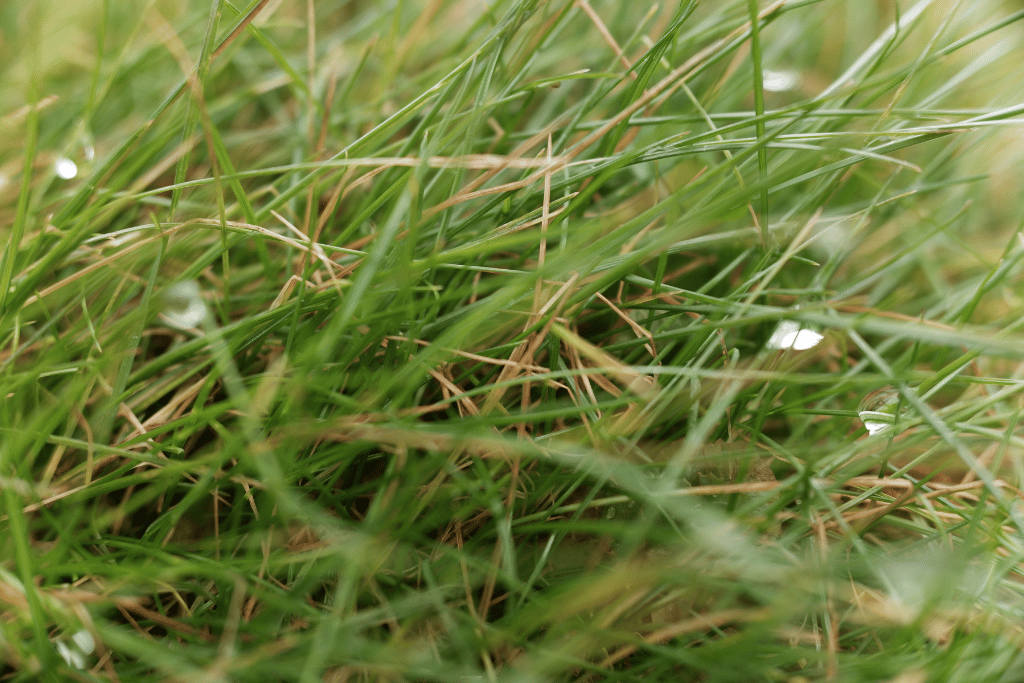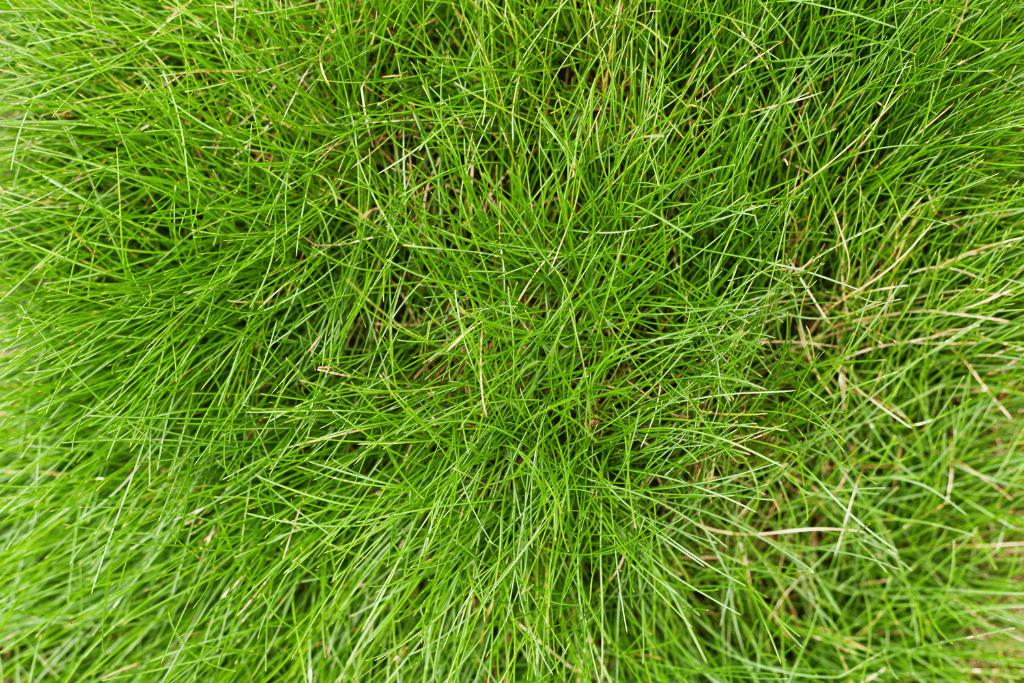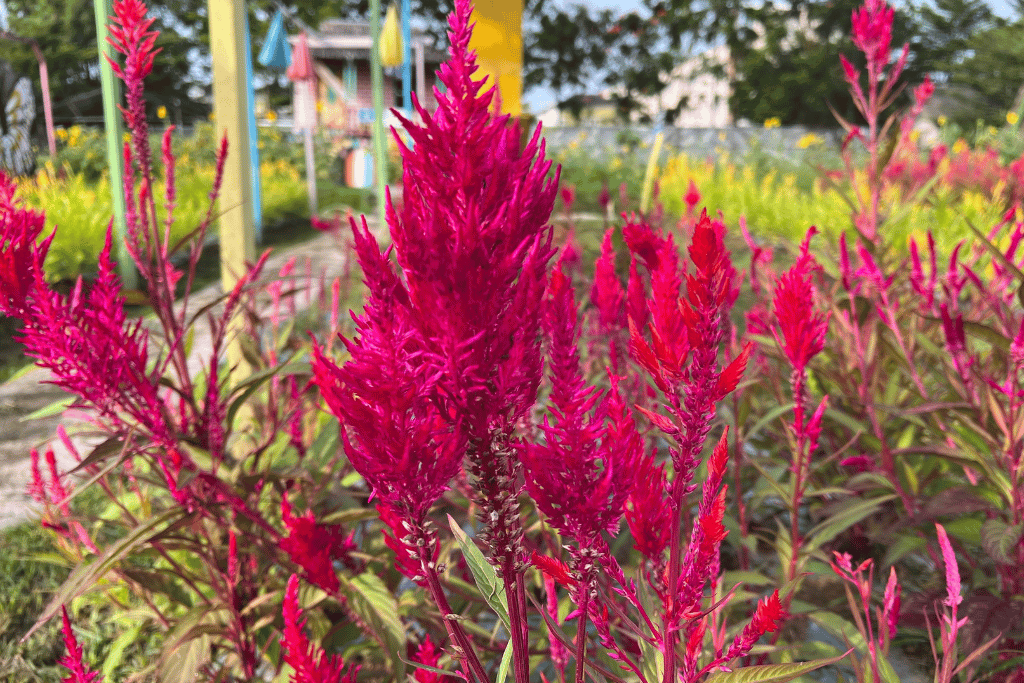If you’re tired of spending hours maintaining your lawn, it’s time to consider low-maintenance grasses for your landscaping needs.
One of the most intriguing options is boreal creeping red fescue – a lesser-known grass that is slowly becoming more popular due to its hardiness and ability to thrive in various conditions.
In this blog post, we’ll explore the benefits of red fescue and show you why it might be the perfect grass for your yard. Let’s get started!
But First, What is Red Fescue Grass?

Red fescue is a type of grass that is native to Europe and can be grown as an annual or perennial in many parts of the United States. It has deep, fine-textured blades that give it an attractive emerald-green color when it’s well taken care of.
This cool season grass requires moist soil until it takes root but will remain durable and resilient once it has! Regardless of the season.
Red fescue is perfect for those looking for a low-maintenance lawn that can stand up to wear and drought, making it the ideal choice in USDA planting zones 1-7 as a perennial and 8-10 as an annual.
If you’re wondering if boreal creeping red fescue is a shade grass, then you’d be right! It’s highly tolerant of shade, making it a great choice for those wanting to grow a lawn in an area with less sun.
No matter where you live, red fescue is sure to bring texture and life to your outdoor space!
Where Does Red Fescue Grass Natively Grow?
Red fescue is a hardy, cool-season grass that grows well in temperate climates. It can be found across the United States in places like New York, Ohio, West Virginia, Pennsylvania, and the New England states.
Red fescue thrives in areas with cooler weather and adequate rainfall, as it needs more water than other grasses.
Red fescue is a great choice for lawns in regions with short, mild winters and cool summers.
It’s also a good option for areas that experience heavy traffic, as it holds up well under pressure and recovers quickly after mowing.
However, in extremely hot climates or places where there is little rainfall, red fescue may go dormant or turn brown.
If you live in an area with hot summers and little rainfall, it’s best to choose a grass like Bermuda grass instead of red fescue.
However, if you’re located in a temperate region where temperatures remain moderate throughout the year, red fescue is a great choice for your lawn. With proper maintenance and watering, red fescue will provide you with a lush, green lawn all year round.
Benefits of Creeping Red Fescue Grass
Red fescue grass is an excellent choice for lawns, gardens, and even wild habitats because it offers many benefits.
Here are a few:
Low Maintenance:
Creeping red fescue grass requires very little maintenance to keep its lush green color all year round. It is able to withstand even the harshest weather conditions and does not need much fertilization or watering.
Aesthetic Appeal:
Creeping red fescue grass has a very attractive, vibrant green color that can create an aesthetically pleasing effect in any area. It offers a natural beauty that can become part of the landscape’s design.
Low Allergy Risk:
Red fescue grass is relatively low in allergenic substances, which makes it a safe option for those who suffer from allergies.
Water Retention:
The roots of the red fescue grass are very deep, and they help to retain water in the soil, reducing water runoff and helping to prevent erosion. This also helps to keep the soil moist in dry weather and improves drainage in wet conditions.
Soil Stability:
The roots of red fescue grass are able to bind together the upper layers of the soil, helping to stabilize it and reduce erosion on slopes or hillsides. It can also help to protect against flooding and can even help to purify contaminated areas.
Wildlife Habitat:
The grass provides a safe, natural habitat for wildlife such as deer, elk, and small mammals who use it as cover and nesting material. So if you’re looking to attract more wildlife to your garden, this is an ideal choice!
These are just some of the many benefits that come with using red fescue grass in your lawn or garden. Whether you choose to use it for aesthetic reasons or for its practical uses, red fescue is sure to add beauty as well as function to any outdoor setting.
Types and Cultivars of Red Fescue Grass

The Red Fescue grass is a great choice for lawns and gardens, with more than 200 species and hundreds of cultivars available. Here are some of the most common varieties that you might encounter when looking for the perfect turfgrass:
Boreal:
Boreal creeping red fescue was developed by the Canadian Department of Agriculture Research Station in 1966 and can withstand the cold temperatures of Alberta, Canada, making it the perfect boreal creeping red fescue growing zone.
It is mostly used for pastures but can be adapted to lawns and gardens with its natural lush appearance and is the most commonly used type of red fescue grass!
Arctared:
Developed by the University of Alaska in 1965, this cultivar is extremely tough and hardy, able to handle extreme temperatures, soil types, pH levels, as well as water shortages. It mostly prefers a rich soil, but you can mix in some fertilizer and organic compost to make it grow just about anywhere.
Banner II:
Developed with insect resistance in mind, this cultivar has a higher level of endophyte which acts as an insect repellent. It is quite versatile and capable of growing in the same conditions as Kentucky bluegrass or red fescue.
Cindy Lou:
Developed in the Netherlands, this cultivar needs regular mowing as it has a tendency to grow out of control otherwise.
It is easy to maintain and grows well even in difficult climates like the northern parts of the USA and southern Alaska.
Jamestown:
Found in Jamestown Island, near the coast of Rhode Island, this cultivar was first cultivated by the University of Rhode Island.
Its blades are smooth and soft, making it great for people that like to walk on grass barefoot, but you will have to avoid planting it in hot and humid southeastern parts of the United States.
No matter what variety you choose, Red Fescue will make a great addition to your lawn or garden. With its hardy nature and easy maintenance requirements, it’s the perfect choice for any gardener looking for a reliable turfgrass that looks amazing all year round!
How to Plant Red Fescue Grass in Your Garden

When it comes to planting red fescue grass, timing is key. The best time to plant the seeds is either in the fall or spring.
September and late April are both ideal for growing this type of grass.
The next step is to choose a shaded area of your lawn that doesn’t get too much sun. Make sure to remove any existing grass or weeds in the area before you begin planting.
You’ll want to test the soil and check the pH levels. Anything between 5.5 and 6.5 is ideal for planting red fescue grass successfully. If it’s higher or lower than that, mix the soil with lime to increase the pH or peat moss to adjust it and bring it down.
Once that’s done, spread a thin layer of compost over the tilled area. Mix well to evenly distribute the compost all over the soil.
Then add a balanced fertilizer at a ratio of one pound per every thousand square feet of land. This will give the grass the nutrients it needs for healthy growth.
Use the same spreader to sprinkle the red fescue grass seeds over the soil. You should calculate about 4.5 pounds of seeds per every thousand feet of land.
Make sure to evenly spread them and use a rake to push them into the soil.
If you’re planting the seeds on a slope, you can mix them with ryegrass seeds. They will grow well together and help prevent land erosion.
Once this is done, water the soil thoroughly to help the seeds settle in. The topsoil should be kept moist for the first two weeks until the red fescue grass’s roots have taken.
With these steps, you should have a lush green lawn of red fescue grass in no time. Just remember to keep it watered and fertilized on a regular basis for maximum growth!
Planting red fescue grass might seem like a daunting task just because of how lush and green this grass type is, but as you can see, as long as you’re careful and do everything by the book, you’ll be able to enjoy a beautiful lawn in no time!
How to Care for Creeping Red Fescue Grass
The beautiful, lush green of a fescue boreal creeping red lawn is an attractive addition to any landscape. To keep your lawn flourishing and healthy, it is important to provide proper care and maintenance.
Here are some tips for caring for and maintaining your creeping red fescue grass:
Watering:
Creeping red fescue grass is highly drought tolerant and does not need to be watered every day or even every week.
In the summer months, water your lawn once or twice a week as needed. In the winter, when the grass is dormant, you may only need to water it once or twice a month. Be sure to adjust your sprinkler system accordingly.
Fertilizing:
Because boreal creeping red fescue grass doesn’t really need that much fertilizer, it is recommended to use 10-10-10 fertilizer with a focus on nitrogen in the summer months.
Do not overfertilize, as this can lead to wilting of the leaves and yellowing of the grass. Avoid fertilizing during the winter months when your grass is dormant.
Mowing:
Mow your creeping red fescue grass for the first time about 3 weeks after the first roots sprout and maintain a height of 1 to 3 inches.
Boreal creeping red fescue germination time is usually constant around the 3-4 week point. During the summer, mow more often than in other seasons, and remember to raise the lawn mower blades height in shaded areas.
Pests and Diseases:
Be aware of pests such as white grubs and billbugs, which can cause uneven grass growth. Treat with a selective herbicide if necessary. Also, be alert for diseases such as red thread dollar spot and pythium blight.
Planting cultivars with high levels of endophyte can help fight these diseases.
If you’re not sure if your grass is doing okay, refer to a boreal creeping red fescue photo showing healthy growth. If yours doesn’t quite look like that, you might want to bring in the herbicides for help!
Following these tips will help ensure that your creeping red fescue grass remains vibrant and healthy for many years to come. So you can enjoy a lush, green lawn you can be proud of!
The Bottom Line
Overall, creeping red fescue is an excellent option for a low-maintenance landscaping solution. Not only is it hardy and low maintenance, but it also looks great and has a variety of uses.
You can use it for both ornamental landscaping and for turf areas such as golf courses. So if you’re looking to take the hassle out of lawn care, give red fescue a try – you won’t be disappointed!



